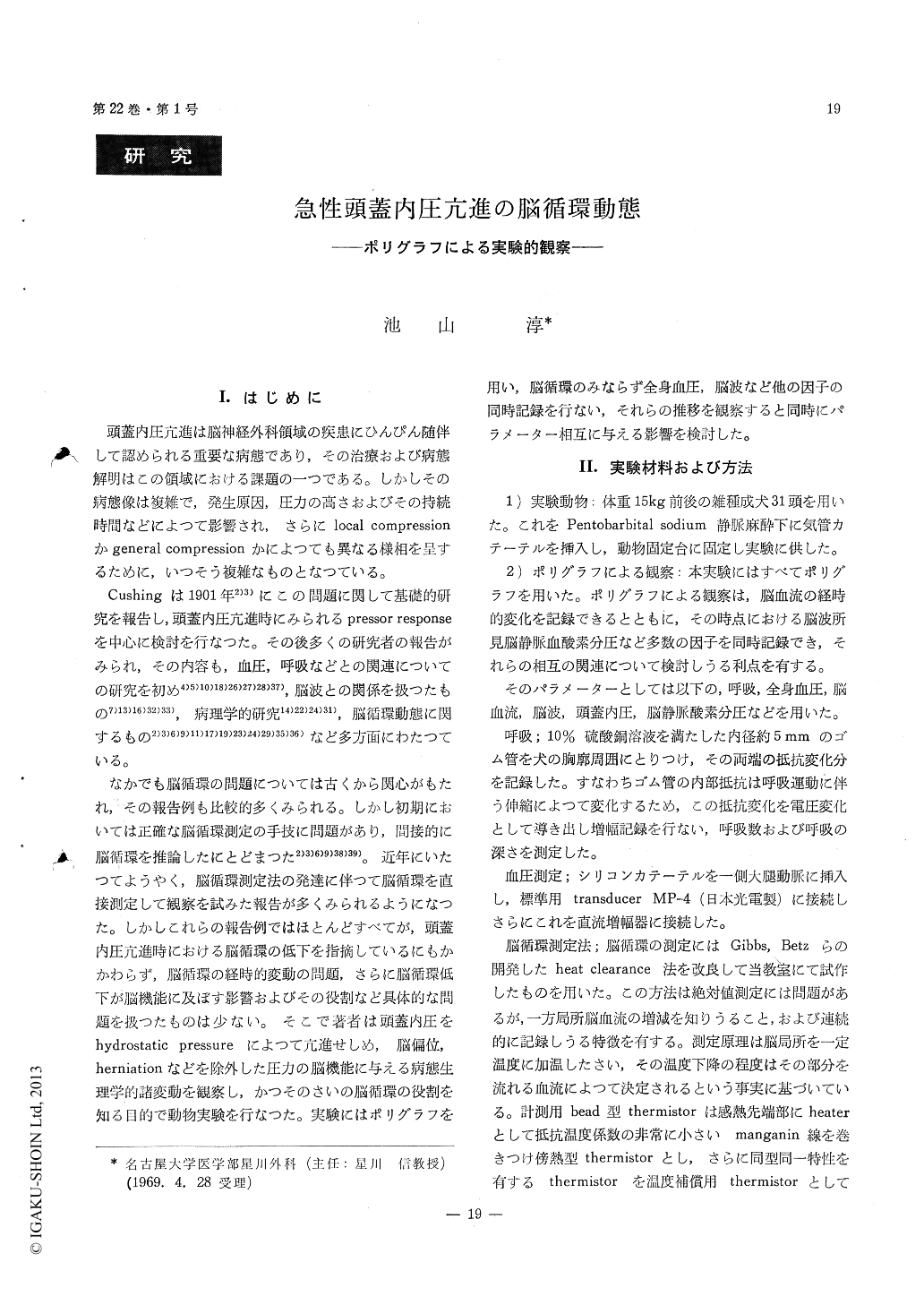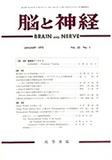Japanese
English
- 有料閲覧
- Abstract 文献概要
- 1ページ目 Look Inside
I.はじめに
頭蓋内圧亢進は脳神経外科領域の疾患にひんぴん随伴して認められる重要な病態であり,その治療および病態解明はこの領域における課題の一つである。しかしその病態像は複雑で,発生原因,圧力の高さおよびその持続時間などによつて影響され, さらにlocal compressionかgeneral compressionかによつても異なる様相を呈するために,いつそう複雑なものとなつている。
Cushingは1901年2)3)にこの問題に関して基礎的研究を報告し,頭蓋内圧亢進時にみられるpressor responseを中心に検討を行なつた。その後多くの研究者の報告がみられ,その内容も,血圧,呼吸などとの関連についての研究を初め4)5)10)18)26)27)28)37),脳波との関係を扱つたもの7)13)16)32)33),病理学的研究14)22)24)31),脳循環動態に関するもの2)3)6)9)11)17)19)23)24)29)35)36)など多方面にわたつている。
In order to investigate changes in cerebral herno-dynamics caused by an artificially induced intracrani-al hypertension, continuous measurements of cerebral blood flow, oxygen tension in the confluence sinus, systemic blood pressure, respiration, intracranial pres-sure and EEG were made on a polygraph. The method used to increase the intracranial pressure in the present study produced a generalized increase in pressure by injections of saline into the cisternamagna, without displacement of the intracranial struc-tures. On the basis of the experimental results, the course of recordings under given elevation rate was devided into following four stages according to changes largely in cerebral hemodynamics.
Stage 1 : The addition of a minute quantity of fluid to the cisterna magna did not cause any change in cerebral hemodynamics. This might be considered the period of compensation for the added fluid.
Stage 2 : As the intracranial pressure was slowly raised, cerebral blood flow began to decrease without any change in systemic blood pressure.
Stage 3 : Subsequent elevation of intracranial pres-sure elicited a pressure response. This stage was divided into two successive parts mainly by thealterations of cerebral blood flow and EEG.
In stage 3-a, further elevation of intracranial pres-sure produced an increase in cerebral blood flow with increased systemic blood pressure. The reduction of amplitude was revealed in EEG. In stage 3-b, cere-bral blood flow began to reduce despite of the high systemic blood pressure due to the pressor response. The electrical activity in EEG corresponded even more closely than before to the degree of cerebral blood flow, which was dependent on the a-v pressure difference in this stage, and was finally abolished.
Stage 4: Systemic blood pressure began to fall and finally became to zero. Cerebral blood flow thus ceased and the EEG was silent.

Copyright © 1970, Igaku-Shoin Ltd. All rights reserved.


